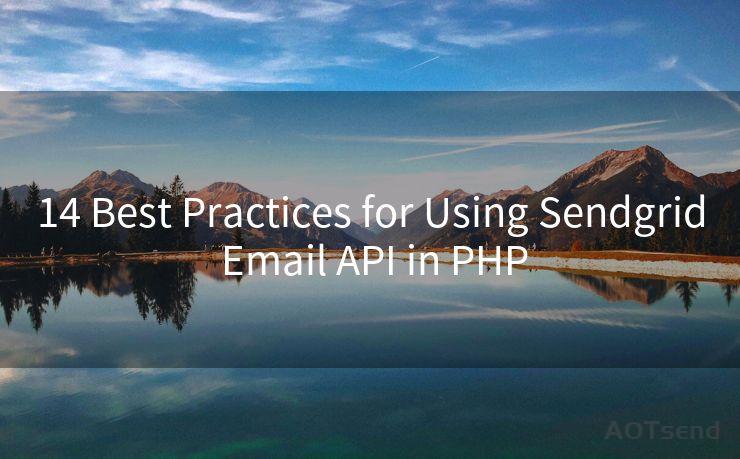14 Best Practices for Using Sendgrid Email API in PHP




When it comes to sending transactional or marketing emails from your PHP application, SendGrid's Email API stands out as a reliable and powerful tool. However, to make the most of this service, it's essential to follow best practices. Here are 14 tips to help you efficiently use the SendGrid Email API in PHP.

1. Understand the SendGrid API Basics
Before diving into the code, familiarize yourself with SendGrid's API documentation. Understanding the endpoints, request parameters, and response formats is crucial for effective integration.
2. Set Up Your SendGrid Account and API Keys
Create a SendGrid account and generate API keys for authentication. Store these keys securely and never hardcode them into your application.
3. Install the SendGrid PHP Library
Use Composer to install the official SendGrid PHP library. This will simplify the process of integrating with the API.
4. Validate Your Email Addresses
Always validate email addresses before sending. Invalid email addresses can cause delivery failures, wasting resources and potentially damaging your sender reputation.
5. Personalize Your Emails
Utilize dynamic content to personalize emails. This increases engagement and reduces the chance of emails being marked as spam.
6. Handle Unsubscribes Gracefully
Include an unsubscribe link in all marketing emails and respect user preferences by removing them from future mailings if they choose to unsubscribe.
7. Optimize Your Email Delivery
Schedule emails during optimal sending windows to increase open rates. Avoid sending large volumes of emails during peak internet usage hours.
🔔🔔🔔
【AOTsend Email API】:AOTsend is a Managed Email Service for sending transactional emails. Support Email Types: reminders, authentication, confirmations, notifications, verification codes, invoices, password resets, account activations, billing statements, two-factor authentication (2FA), and one-time passwords (OTP) emails, etc. $0.28 per 1000 Emails. 99% Delivery, 98% Inbox Rate.
You might be interested in:
Why did we start the AOTsend project, Brand Story?
What is a Managed Email API, How it Works?
Best 25+ Email Marketing Platforms (Authority,Keywords&Traffic Comparison)
Best 24+ Email Marketing Service (Price, Pros&Cons Comparison)
Email APIs vs SMTP: How they Works, Any Difference?
8. Monitor Your Email Metrics
Track key metrics like open rates, click-through rates, and bounce rates to measure the effectiveness of your email campaigns.
9. Follow Email Best Practices
Ensure your emails are mobile-friendly, have a clear call to action, and include an engaging subject line.
10. Handle Bounces and Complaints
Monitor bounce and complaint feedback loops to identify and remove problematic email addresses from your lists.
11. Use Tags and Categories
Utilize SendGrid's tagging and categorizing features to segment your email lists and track performance.
12. Test, Test, Test
Regularly test your emails across multiple devices and email clients to ensure compatibility and readability.
13. Secure Your Email Content
Use TLS encryption when sending sensitive information via email to protect your users' privacy.
14. Stay Up to Date
Regularly check SendGrid's status page and subscribe to updates to stay informed about any service changes or interruptions.
By following these 14 best practices for using the SendGrid Email API in PHP, you can ensure efficient, effective, and secure email delivery for your application. Remember, the key to success lies in understanding your audience, respecting their preferences, and optimizing your emails for maximum engagement.




Scan the QR code to access on your mobile device.
Copyright notice: This article is published by AotSend. Reproduction requires attribution.
Article Link:https://www.mailwot.com/p2536.html



